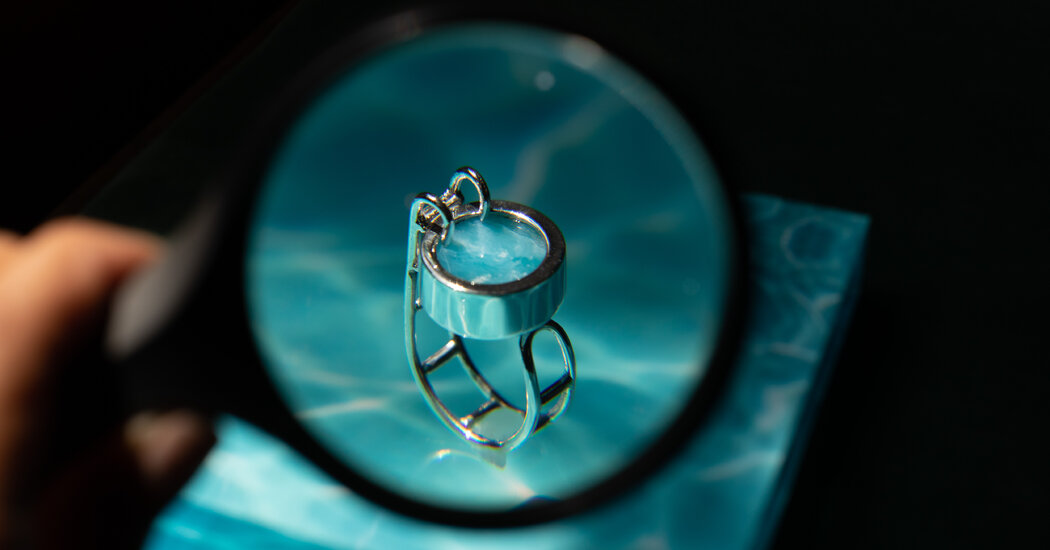
Eventually, he sent a sample to the Smithsonian Institution, the American museum and research complex, which identified it as a pectolite. Mr. Méndez said he traveled to the United States to buy equipment to grind the stone, which is harder than amber, coral and other materials familiar to Dominican artisans at the time. He also famously came up with the name for what locals had simply called the “blue stone,” combining Larissa, his daughter’s name, with mar, the Spanish word for sea. (Ms. Méndez died last year at age 51.)
Mr. Méndez said he had been surprised by the growth of the stone’s popularity. “Larimar is now known throughout the world,” he said.
It has certainly become the mainstay of the economy in Bahoruco, a municipal district in Barahona that the country’s booming tourism industry has largely passed by. The coastal town of Bahoruco, the district seat a few miles from the larimar mine, has more than 60 workshops where artisans shape and polish the stones, according to a government survey.
César Féliz, who has been a lapidary in Bahoruco for about 20 years, described working with larimar as a kind of addiction. During a recent phone interview, he said he had been crafting a pair of earrings shaped like ocean waves and cut from a single piece of stone, a commission from a German jewelry designer.
“Every time you do a job, you want to invent something new and figure out how you can do it,” Mr. Féliz said. (Miguel Féliz, the artisan school administrator, is his brother.)
Decades ago, the area depended mostly on agriculture and fishing, but now the economy revolves around larimar, according to Mr. Gómez, the larimar producer, who leads the local governing board. Two years ago he was elected to the position, the equivalent to that of mayor of the district, which he said had a population of 6,500 to 8,500.






